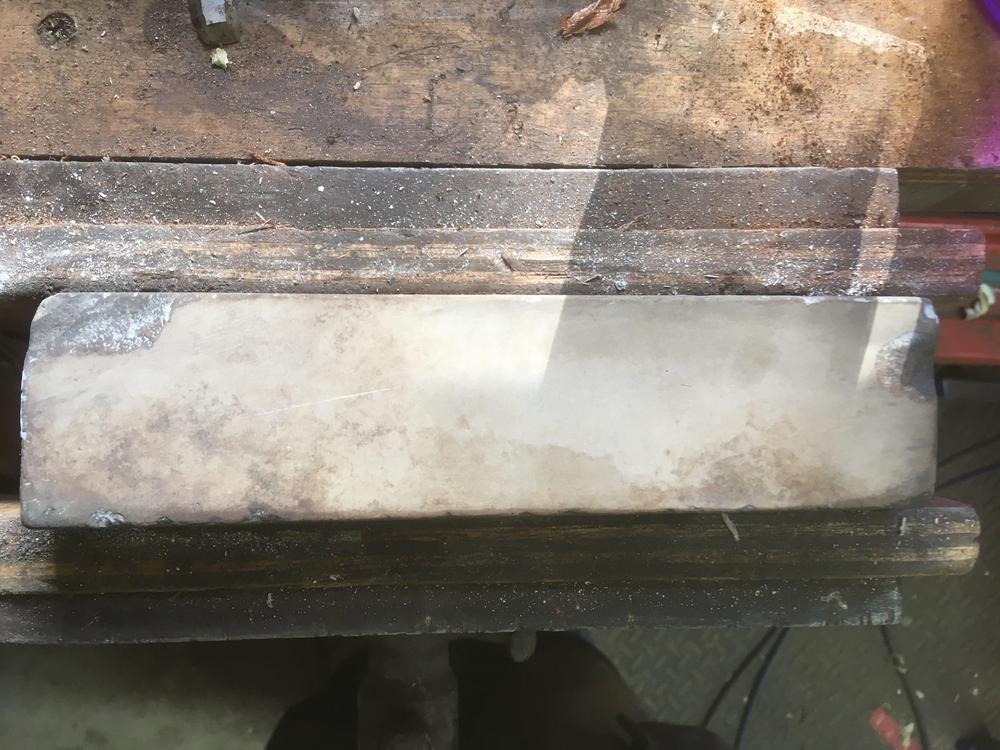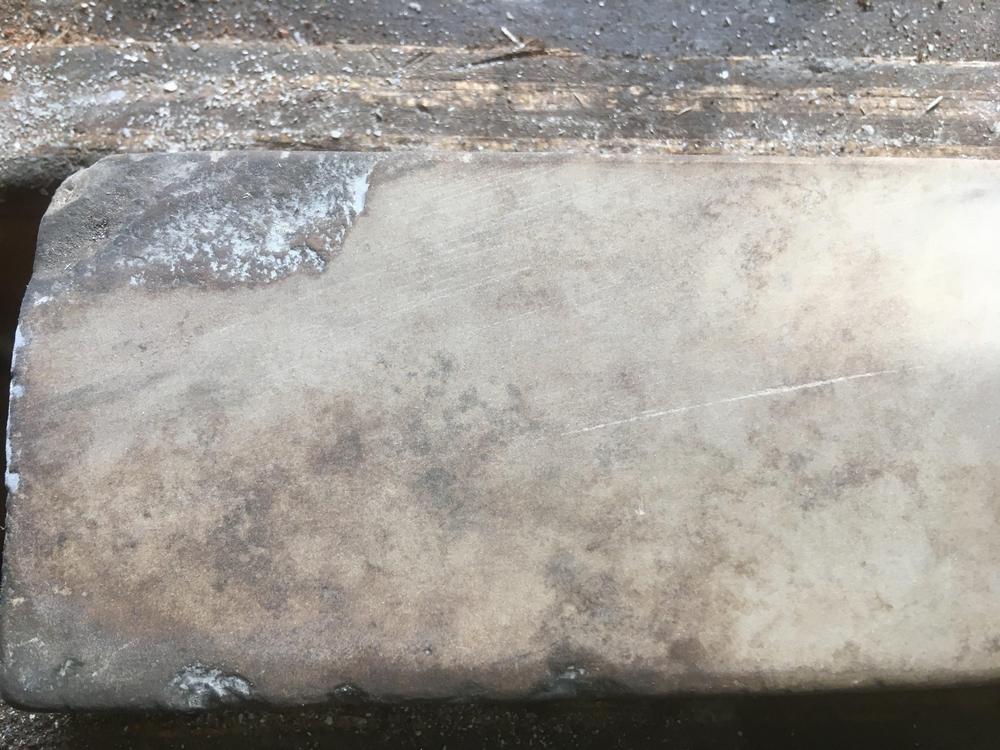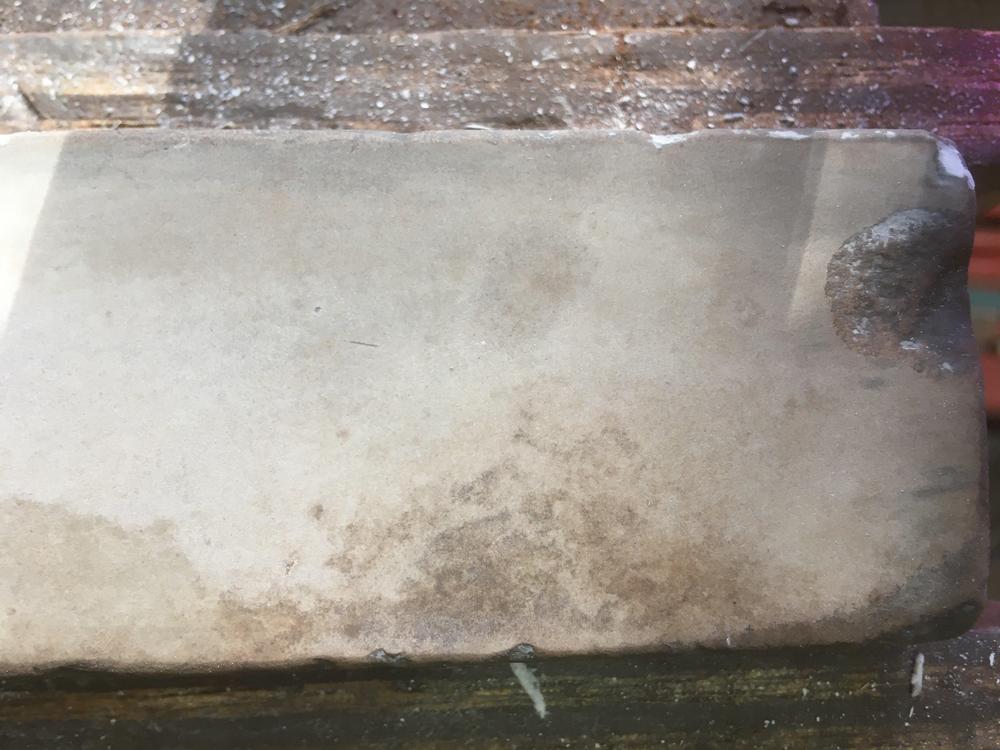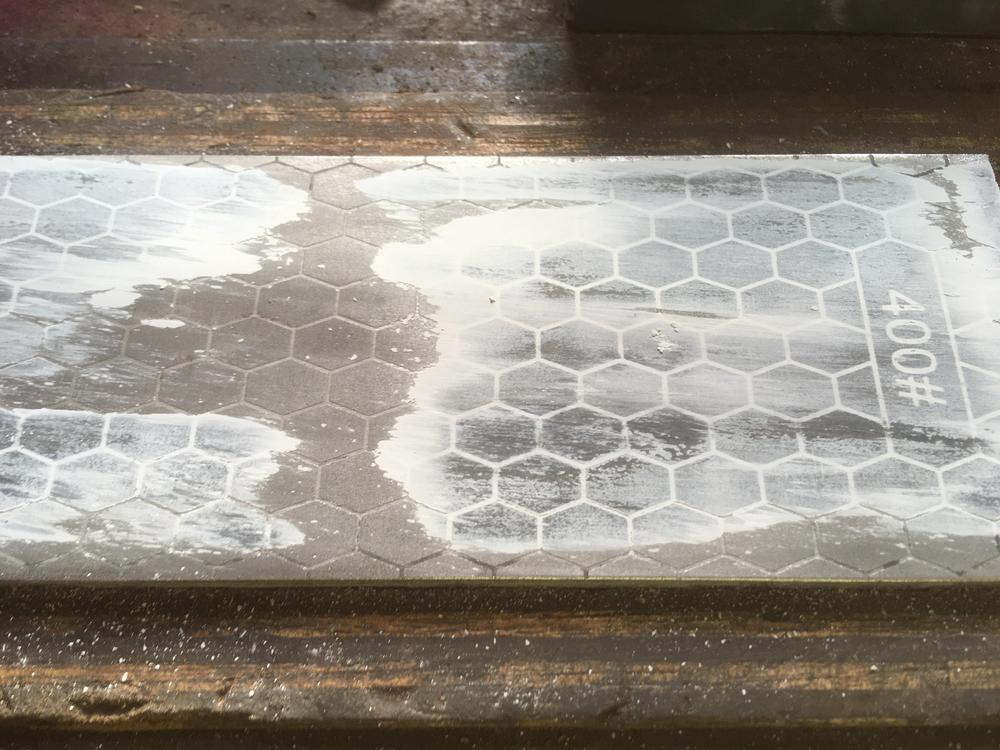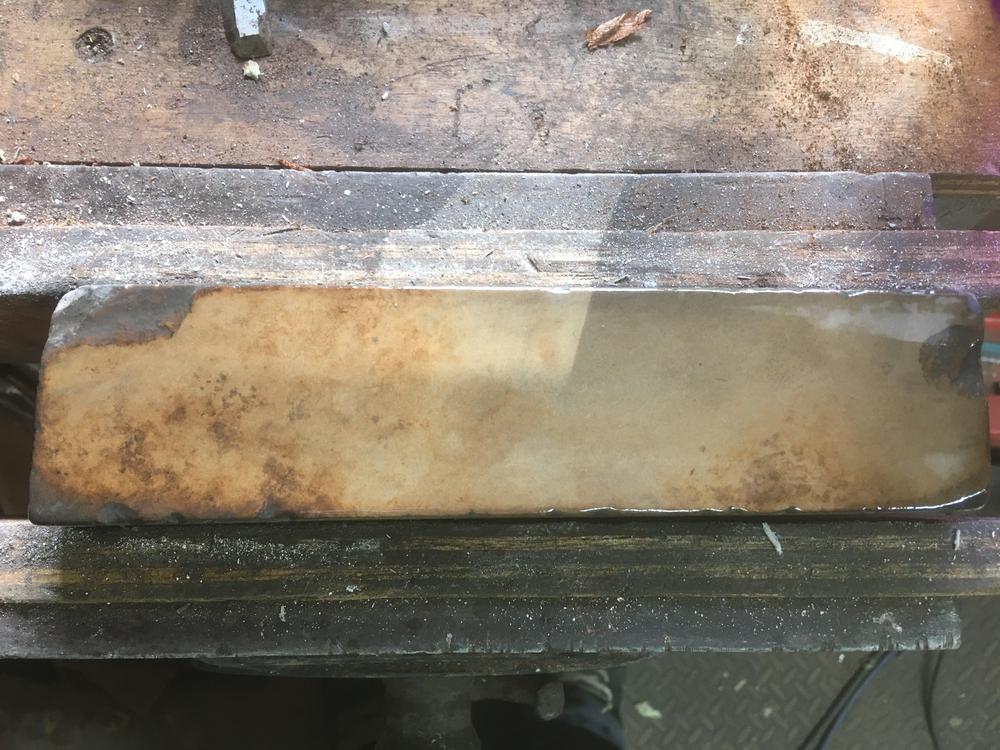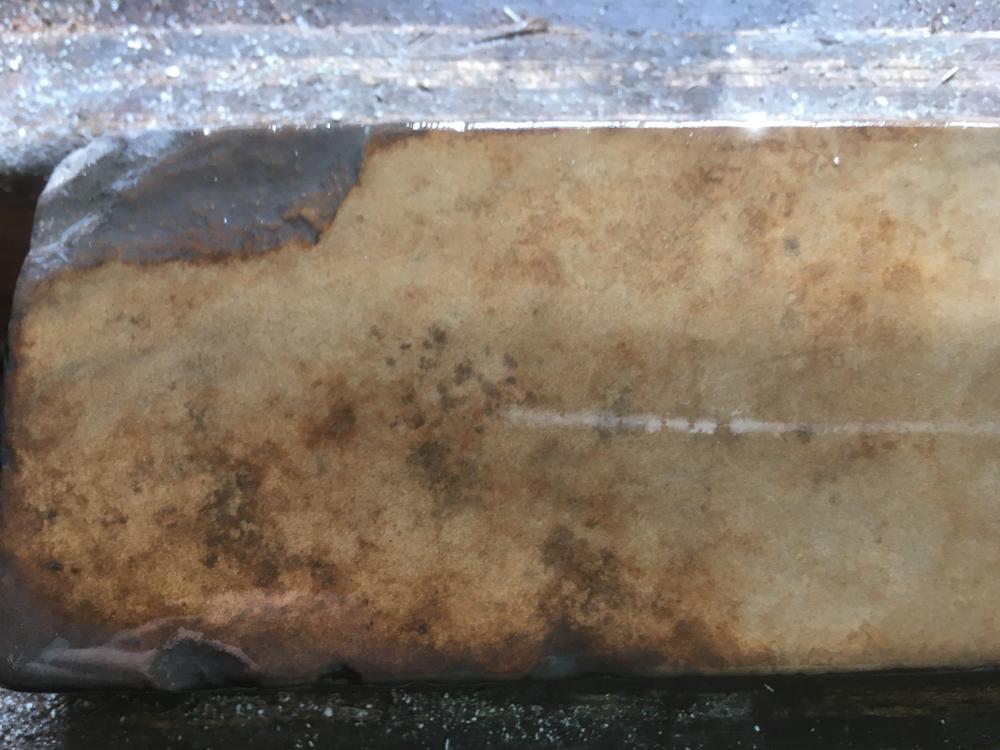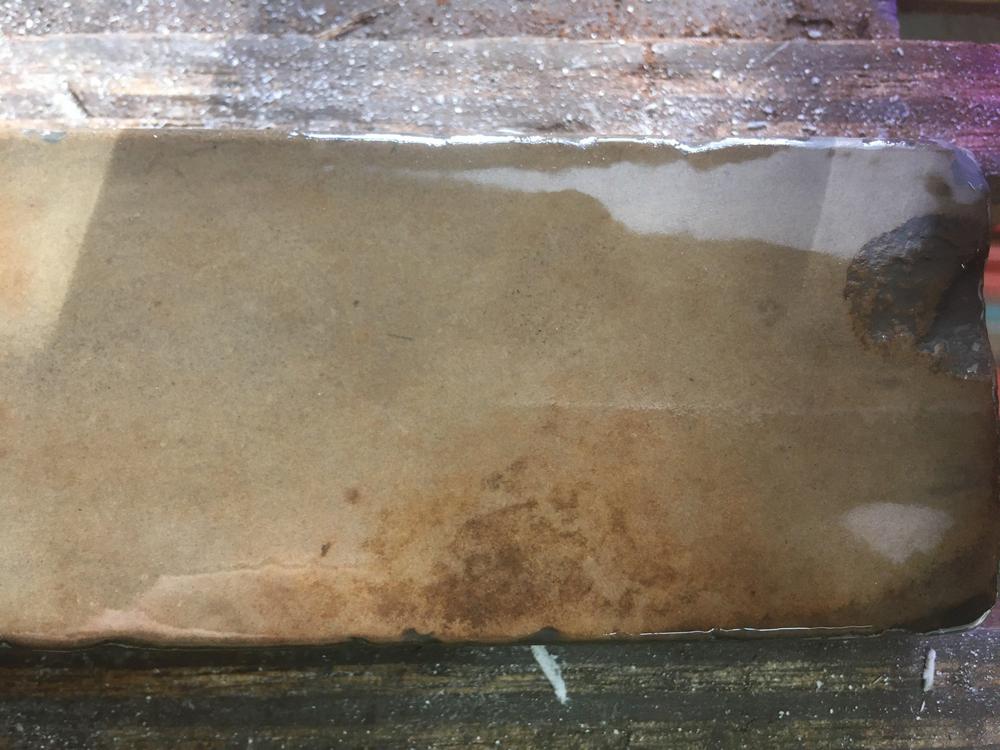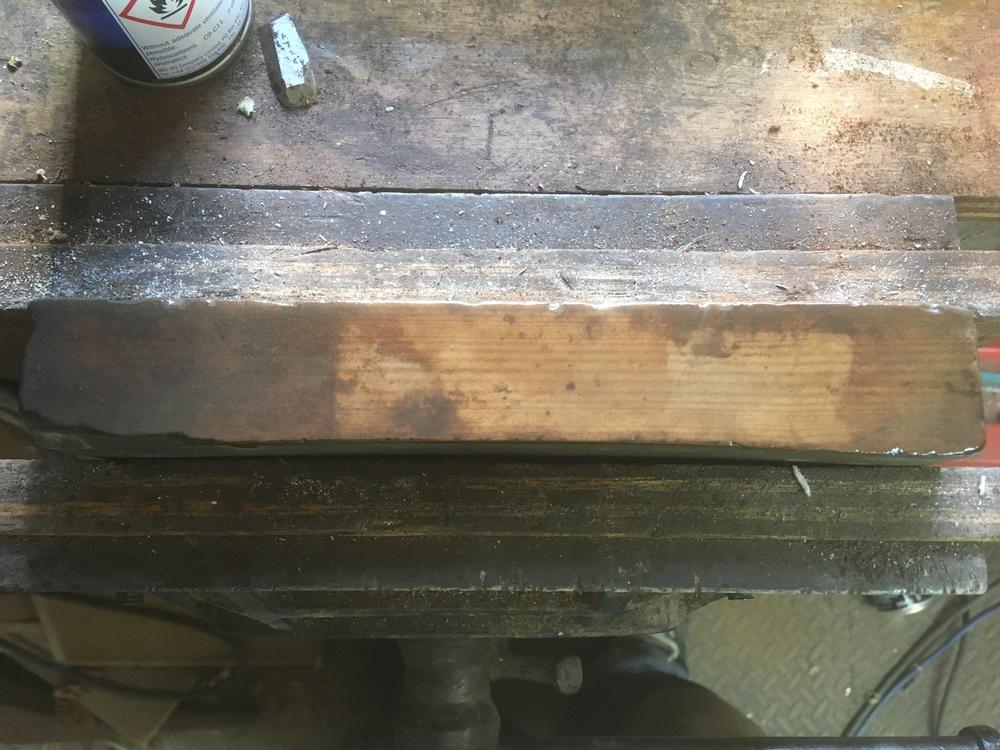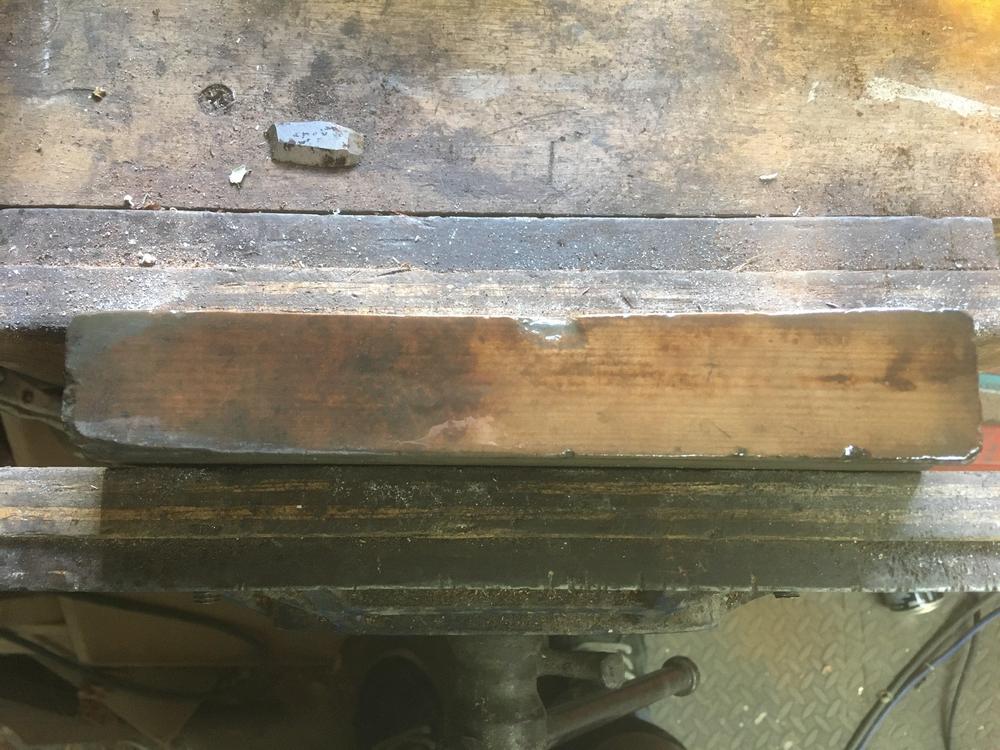I decided to flatten the one side that was pretty flat anyway with a diamond plate in the hopes that it would clarify the surface a bit, the other side has a 3-4mm bow in the length of the stone.
The stone seems to actually be much harder to lap with the diamond plate than the Washita I did last time, it leaves a kind of white chalky dry paste on the diamond plate which needs to be wiped off occasionally. I lapped the stone dry.
Here's the stone wetted with WD40, the stone seems sort of permeable because the WD40 seemed to disappear quite quickly.
Initially, I thought the lines on the side of the stone were saw marks hence why I thought it had been cut with a reciprocating saw, however, I see now that this is actually some kind of "grain" to the stone a bit like how wood has a grain, perhaps this will help identify it?
I'm not 100% sure whether the stone is absolutely clean, I've been dousing it with Meths and scrubbing it with a Scotch-Brite pad which cleaned some of the grime off but I'm not sure whether some of the markings are grime or just the natural stone.
It feels pretty smooth and trying it on a chisel it brings up a keen edge shaving edge without needing to strop it although a strop would finish it off much better. I'm still none the wiser on what it actually is though, some kind of sandstone perhaps?











